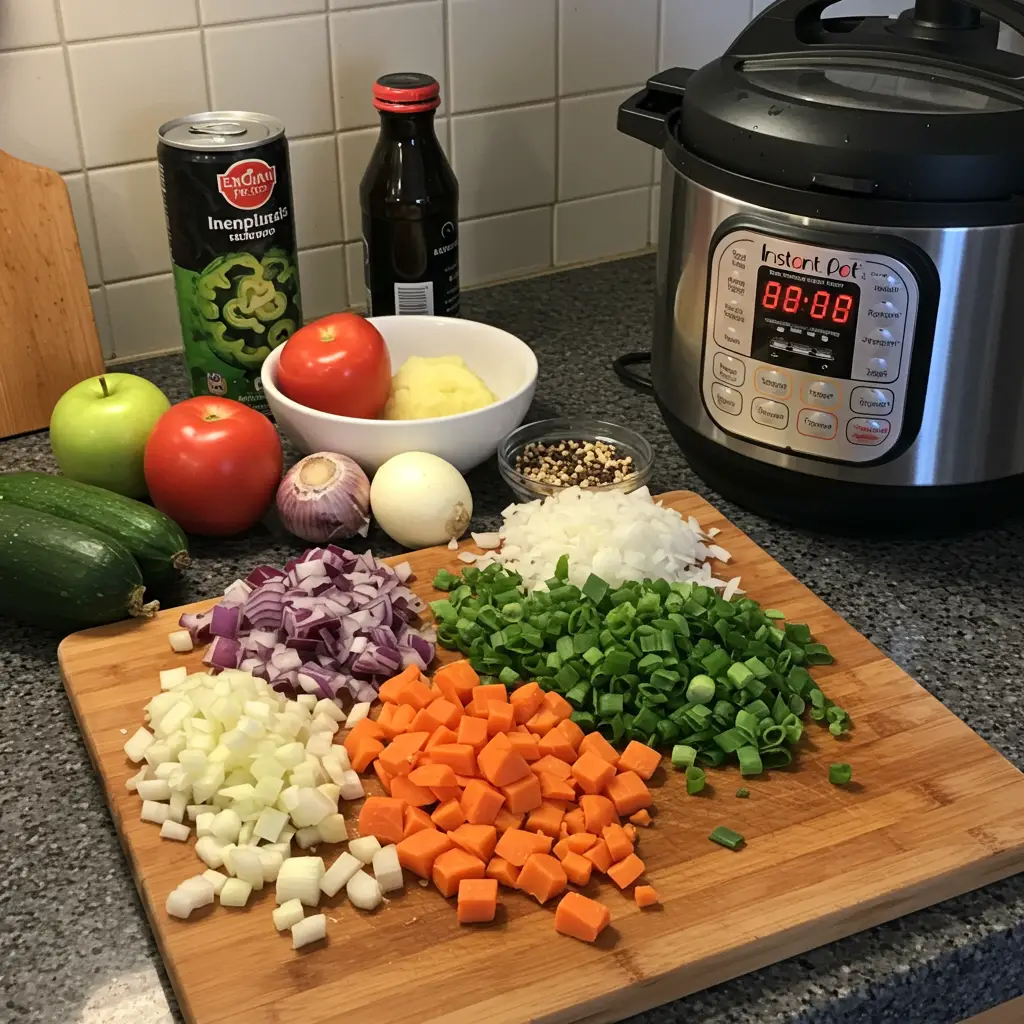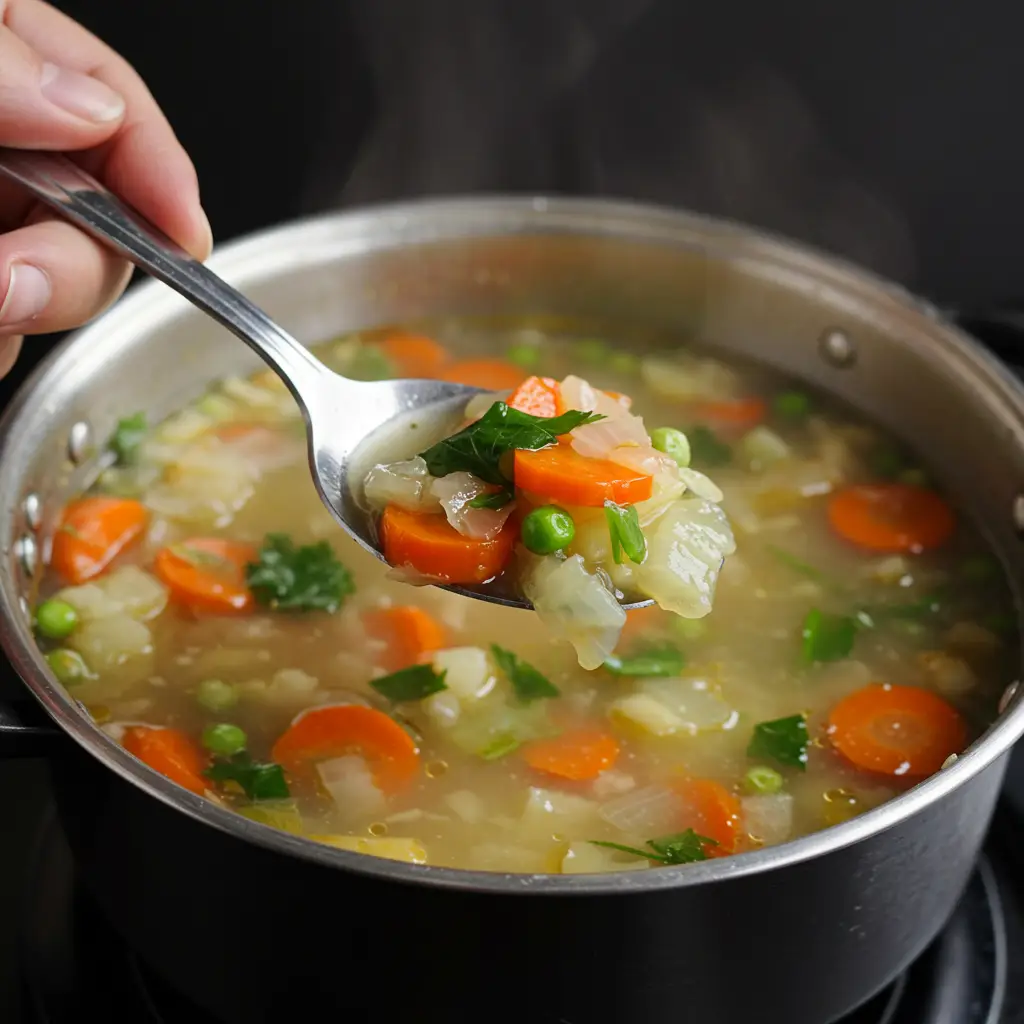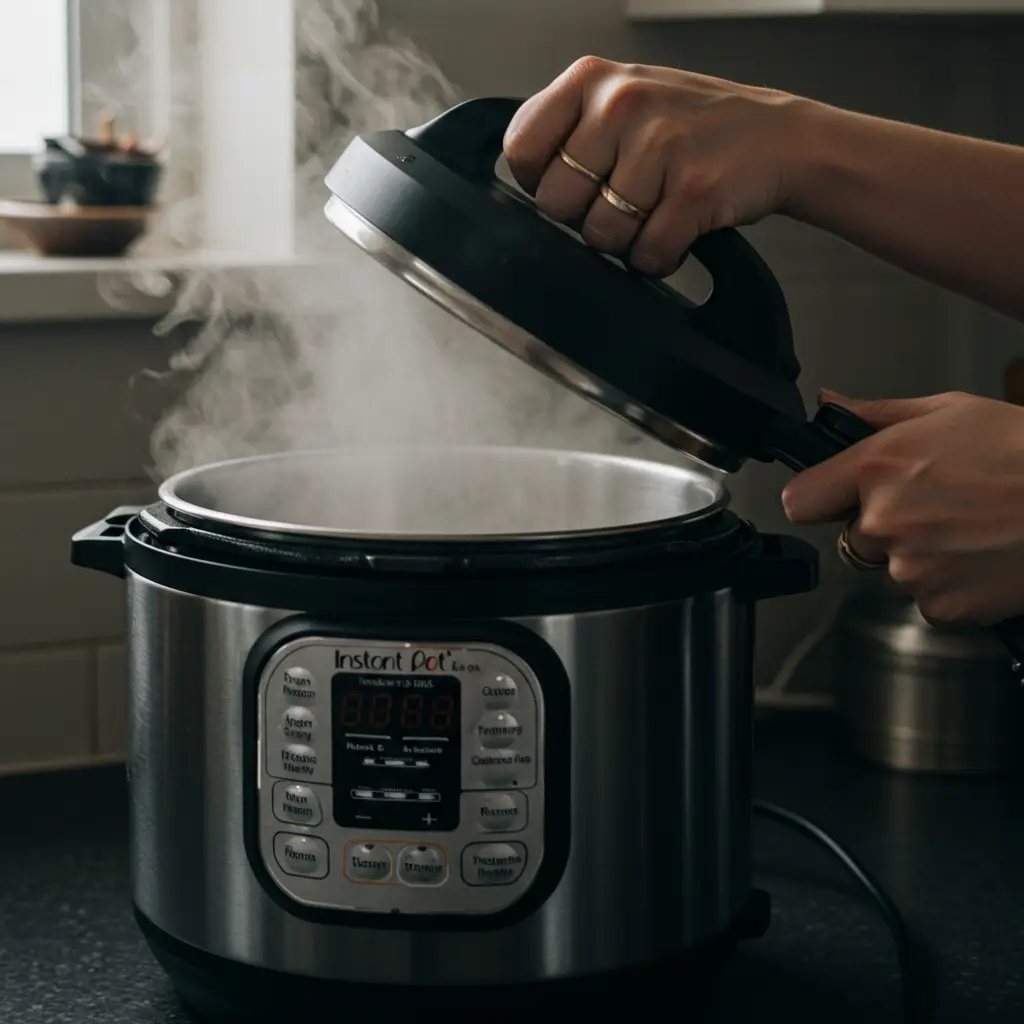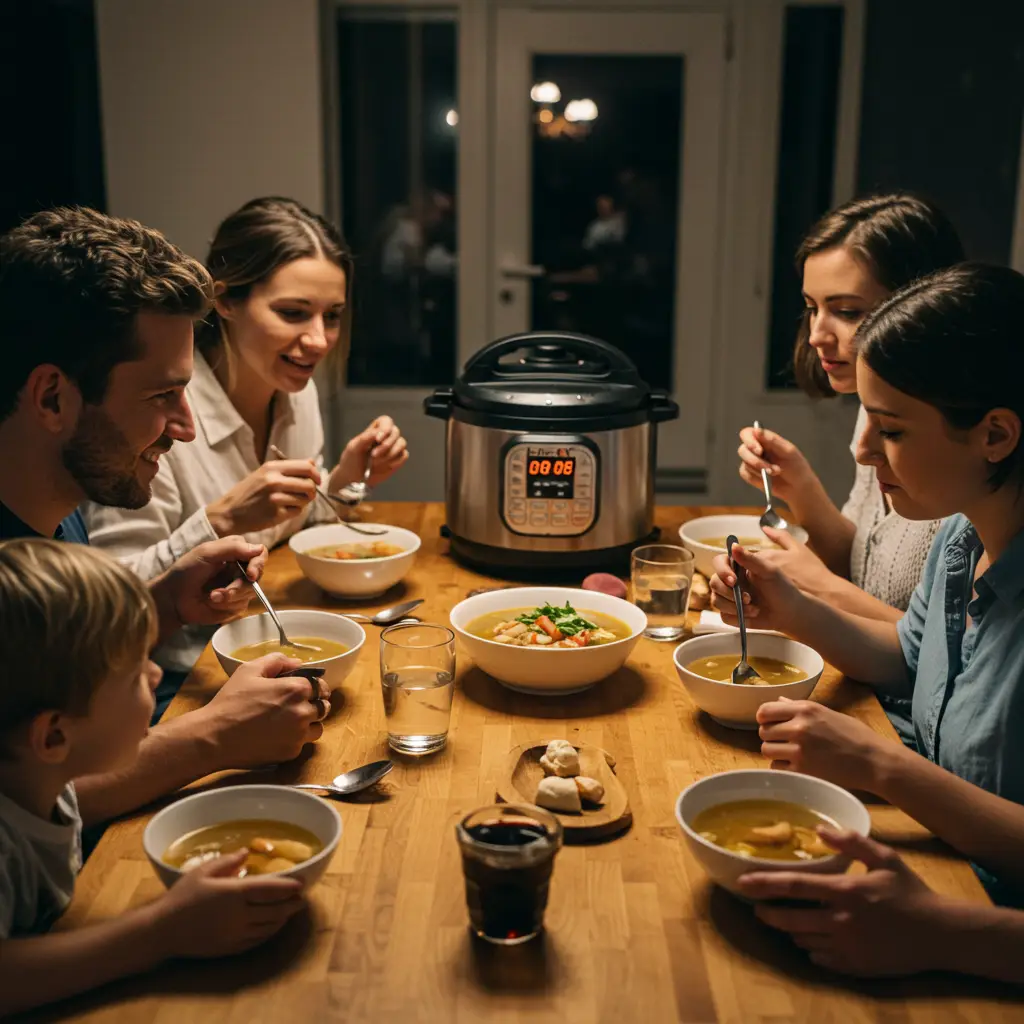Whether it’s a creamy tomato bisque or a hearty chicken noodle soup, the Instant Pot simplifies creating your favorite dishes. But here’s a common question: Can you overcook soup in an Instant Pot? The answer is yes, it’s possible. Overcooked soup can lose its texture and flavor, but don’t worry—this guide will help you understand how to avoid overcooking and create the perfect soup in your Instant Pot every time. Ready to learn the secrets of pressure cooking perfection? Let’s dive in! 🍲
Table of Contents

What Is an Instant Pot and How Does It Work?
If you’re new to the Instant Pot, think of it as your kitchen’s multi-tasking superhero. It functions as a pressure cooker, slow cooker, rice maker, and more—all in one! By using steam pressure, it cooks food faster than traditional methods while locking in flavors and nutrients.
This versatile kitchen gadget is particularly great for soups. Why? It intensifies flavors and tenderizes ingredients to perfection. But there’s a catch: Can you overcook soup in an Instant Pot? Yes, overcooking can happen if you’re not careful. This guide will help you avoid common pitfalls and enjoy perfectly cooked soup every time.
Why Is the Instant Pot Popular for Soup?
Let’s be real—nobody wants to babysit a pot on the stove. The Instant Pot simplifies cooking by taking over once you set the timer. It’s especially handy for soup lovers because it:
- Saves time: Soups that normally take hours are ready in under 30 minutes.
- Preserves flavor: Pressure cooking melds the flavors beautifully.
- Is versatile: You can make broth-based soups, creamy soups, or even stews.
Quote: “The Instant Pot is like the cozy blanket of kitchen gadgets—it hugs all the ingredients together into something amazing!”
Understanding the Soup Function in an Instant Pot
What Does the Soup Function Do?
The “Soup” button on your Instant Pot isn’t just there for show. This preset program is designed to simmer your ingredients gently. It uses lower pressure compared to other settings, which helps prevent frothy liquids like broths from spilling over.
How Does Pressure Cooking Affect Soup?
Pressure cooking is like giving your soup a bear hug—it forces heat and steam into the ingredients, cooking them much faster than traditional methods. This technique is ideal for breaking down tough vegetables and tenderizing meat, making it perfect for hearty soups. But here’s the question: Can you overcook soup in an Instant Pot? Unfortunately, yes—overcooking can happen, leaving your soup overly soft, with mushy vegetables and a loss of texture. By understanding how pressure cooking works, you can avoid common mistakes and create perfectly cooked soup every time.
Differences Between Manual and Soup Settings
Here’s where things get interesting:
- The Manual Setting allows you to customize cooking times and pressures. This is great if you’re making a chunky stew or soup with delicate ingredients.
- The Soup Setting automates the process, using a gentler pressure. It’s perfect for clear broths or creamy soups.
Which should you choose? If you’re a beginner, stick to the Soup setting—it’s practically foolproof.
Can You Overcook Soup in an Instant Pot?
What Happens If You Overcook Soup?
Overcooking soup in an Instant Pot can leave you with a pot of disappointment. Here’s what you might notice:
- Mushy Veggies: Carrots, potatoes, and zucchini can break down into a puree-like texture.
- Rubbery Meat: Proteins like chicken can become tough if cooked too long.
- Loss of Flavor: Cooking for too long can mute the natural flavors of your ingredients.

Signs Your Soup Has Been Overcooked
Wondering if you’ve overcooked soup in your Instant Pot? Here are some telltale signs:
- The soup has turned into a single-texture blend, resembling baby food.
- Meat feels dry or chewy instead of tender and juicy.
- Flavors taste dull, overly blended, or even muted.
Common Ingredients That Suffer When Overcooked
Certain ingredients are more prone to overcooking in an Instant Pot:
- Leafy greens (like spinach): They quickly wilt and lose their vibrant color.
- Seafood: Shrimp or fish can become rubbery and unappetizing.
- Dairy: Cream or cheese-based soups often curdle when cooked too long.
By understanding these signs and common pitfalls, you can avoid the dreaded question: “Can you overcook soup in an Instant Pot?” With a little care, your soup will always be perfectly cooked and delicious!
Tip: Always add delicate ingredients like cream or spinach after the pressure cooking cycle is complete. A quick stir is all they need!
Preventing Overcooking in an Instant Pot
Understanding Cooking Times for Soup Ingredients
Not all ingredients cook at the same speed. Here’s a quick guide:
- Root Vegetables (carrots, potatoes): 8–10 minutes under pressure.
- Meat (chicken thighs, beef chunks): 10–15 minutes under pressure.
- Delicate Veggies (zucchini, green beans): 3–5 minutes under pressure.
Tips for Layering Ingredients in the Pot
Layering ingredients can help prevent overcooking:
- Bottom Layer: Dense veggies like carrots or potatoes.
- Middle Layer: Proteins like chicken or beef.
- Top Layer: Light veggies or delicate additions.
This method allows ingredients to cook evenly, with the toughest items getting the most heat.
Using Natural vs. Quick Pressure Release

The way you release the pressure matters:
- Natural Release: Best for soups with meat or beans; it prevents sudden temperature changes that could overcook delicate items.
- Quick Release: Great for thinner soups or when you’re adding fresh ingredients after cooking.
Quote: “Think of pressure release as the final stretch of cooking—it’s the difference between a perfect soup and a soggy mess.”
Common Problems with Instant Pot Soup
Cooking soup in an Instant Pot can feel like magic, but even magic has its hiccups. From the infamous burn warning to unevenly cooked ingredients, these challenges are frustrating but entirely avoidable. Let’s tackle the most common soup mishaps and how to fix them.
Burn Warning: What It Means and How to Avoid It
The dreaded “burn” warning is every Instant Pot user’s nightmare. But don’t panic—it doesn’t mean you’ve ruined dinner.
Why It Happens:
- Thick or starchy ingredients, like rice or beans, settle at the bottom and scorch.
- The liquid content in your soup is too low for the Instant Pot to build pressure properly.
How to Fix It:
- Deglaze the Pot: Before pressure cooking, scrape the bottom of the pot with a wooden spoon after sautéing. This removes stuck-on bits that can trigger the burn warning.
- Add Enough Liquid: Instant Pots need a minimum amount of liquid (usually 1–1.5 cups) to work properly.
- Avoid Thickening Agents Too Early: Ingredients like cream or flour thicken soups and can burn. Add these after cooking.
Uneven Cooking: Causes and Fixes
Ever open your Instant Pot to find some veggies are mushy while others are undercooked? Uneven cooking happens when ingredients aren’t prepped or layered correctly.
Tips to Fix It:
- Cut Evenly: Chop vegetables into similar-sized pieces to ensure they cook at the same rate.
- Layer Strategically: Place dense veggies and proteins at the bottom, where they’ll get the most heat. Delicate items should go on top.
- Stir Post-Cooking: Once the pressure is released, give your soup a good stir to distribute flavors and textures evenly.
Soup Too Thick or Thin? How to Adjust Consistency
It’s easy to misjudge liquid levels when cooking soup in an Instant Pot. Thankfully, fixing the consistency is a breeze.
Too Thick?
- Add broth or water, one tablespoon at a time, while stirring.
- Use the sauté function to bring the soup to a simmer and adjust seasoning if needed.
Too Thin?
- Use a cornstarch slurry (1 tablespoon cornstarch mixed with 2 tablespoons water). Add it slowly while stirring until the soup thickens.
- Alternatively, let the soup simmer with the lid off on sauté mode to evaporate excess liquid.
Best Practices for Cooking Soup in an Instant Pot
Now that we’ve solved common problems, let’s talk about how to make your soup flawless every time.

Choosing the Right Ingredients for Instant Pot Soup
Not all ingredients are Instant Pot-friendly. Keep these in mind:
- Best for Soup: Root vegetables (carrots, potatoes), proteins (chicken thighs, beef stew meat), and beans (lentils, chickpeas).
- Avoid Overcooking: Leafy greens, seafood, and dairy-based ingredients. Add these after the pressure cooking is done.
Prepping Ingredients for Even Cooking
Preparation is key to soup success:
- Cut Uniform Pieces: This ensures everything cooks evenly.
- Soak Beans: If you’re using dried beans, soaking them first shortens their cooking time and prevents splitting.
- Blanch Tough Veggies: Pre-cooking hard vegetables like squash can speed up cooking without losing texture.
Adjusting Seasoning After Pressure Cooking
Pressure cooking intensifies flavors, but sometimes the balance is off. Here’s how to fix it:
- Too Salty? Add a splash of lemon juice or a peeled potato to absorb excess salt.
- Not Flavorful Enough? Stir in fresh herbs, a pinch of chili flakes, or a dollop of sour cream.
Pro Tip: Always taste your soup after cooking—it’s the golden rule of Instant Pot perfection! 🍋
Alternatives to the Instant Pot for Soup
While the Instant Pot is a game-changer, it’s not the only way to make a great soup. Let’s compare other methods.
Slow Cooker vs. Instant Pot: Which Is Better for Soup?
Slow Cooker Pros:
- Gentle, even cooking over several hours.
- Ideal for creamy soups or stews that need time to develop flavors.
Instant Pot Pros:
- Cooks soups in a fraction of the time.
- Better for soups with hearty or tough ingredients, like beans or meat.
If you love planning ahead, the slow cooker is your best friend. If you need soup now (or, you know, within 30 minutes), the Instant Pot wins.
Stovetop Soup Tips and Tricks
The stovetop method is traditional but offers plenty of control:
- Simmer gently to avoid overcooking delicate ingredients.
- Skim foam or impurities from the top for a clearer broth.
- Stir occasionally to prevent sticking or scorching at the bottom.
“The stove top is like a symphony, letting you adjust every note, but the Instant Pot is like a playlist—set it and enjoy!” 🎵
Frequently Asked Questions About Instant Pot Soup
Can You Reheat Soup in an Instant Pot?
Absolutely! Use the “Sauté” or “Keep Warm” function to reheat your soup evenly. Avoid reheating creamy soups at high temperatures to prevent curdling.
What Is the Best Setting for Cream-Based Soups?
For creamy soups, the “Soup” or “Manual” setting on low pressure is best. Always add dairy after pressure cooking to prevent separation.
Can You Cook Frozen Ingredients in Soup?
Yes, you can! The Instant Pot handles frozen meats and veggies well, but keep in mind:
- Cooking times will increase slightly.
- Use enough liquid to prevent the burn warning.
Conclusion
Cooking soup in an Instant Pot offers a balance of convenience and flavor, but it’s essential to manage ingredients and settings carefully to avoid overcooking. For those exploring broader soup ideas, consider trying this Easy Crockpot Potato Soup with Hash Browns for a creamy and satisfying dish. If you’re interested in enhancing the depth of flavor in your recipes, this guide on How to Add Depth of Flavor to Vegetable Soup can be a game-changer. Lastly, for tips on thickening and perfecting soups, Instant Potato Flakes to Thicken Potato Soup provides practical and efficient advice. With these resources, you’ll elevate your soup game and enjoy perfect bowls every time!

